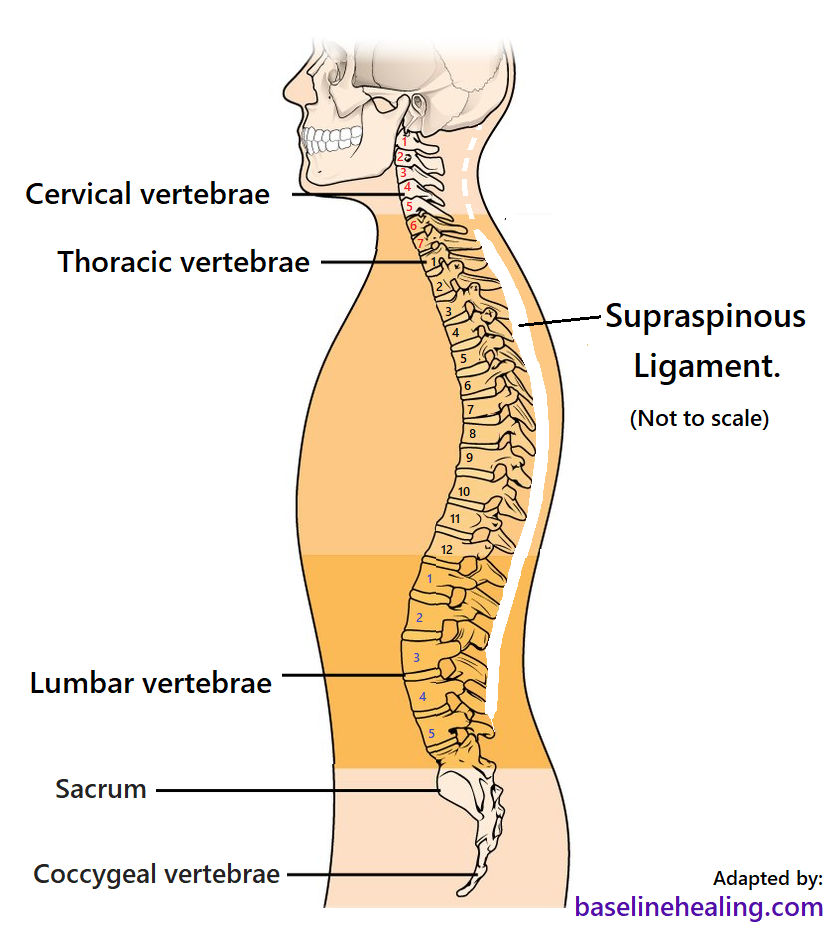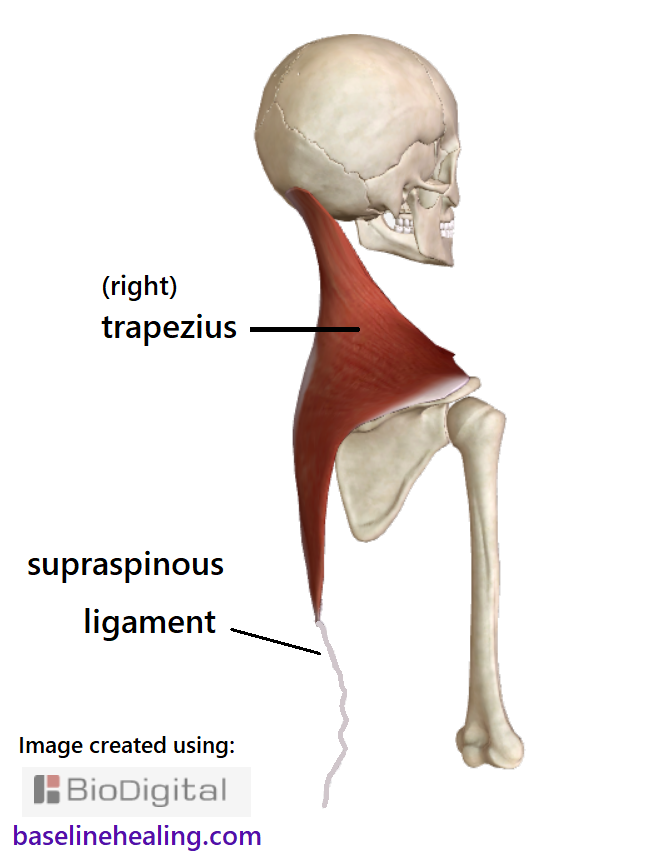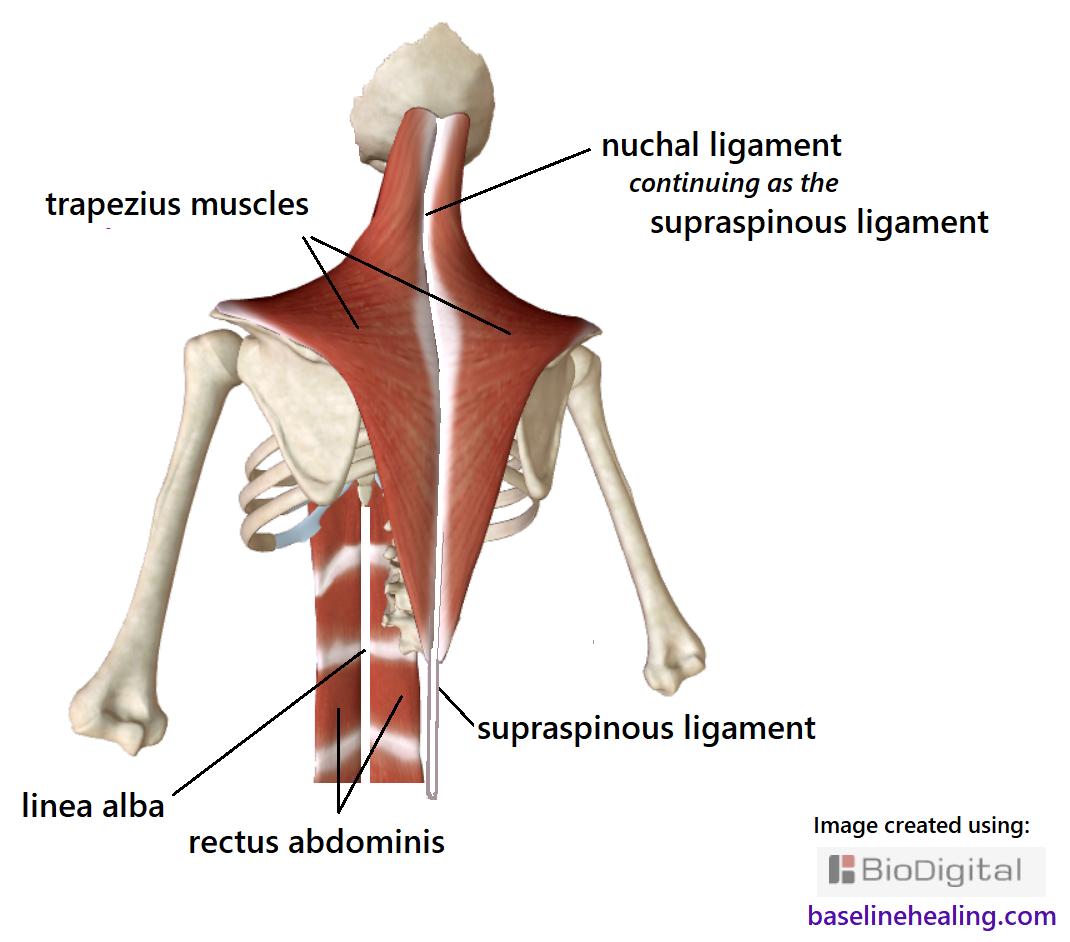(new-kal) (supra-spy-nus)
The nuchal ligament and supraspinous ligament lie on the body's midline at the posterior (back) of the body, forming a continuous strip of connective tissue from 'head to tail'.

Also known as the ligamentum nuchae.
nuchae = "nape" (back of the neck).

The nuchal ligament is like a 'leaf' of connective tissue, midline in the back of the neck attaching to the skull and cervical vertebrae (neck bones).
The nuchal ligament is fibro-elastic, consisting of tough collagen fibres and elastic fibres.
The top attachment of the nuchal ligament is to the external occipital protuberance (the midline bump on the back of the skull) and the median nuchal line of the skull. The external occipital protuberance is one of our midline markers for body alignment and balance.
The nuchal ligament attaches to the spinous processes of the seven cervical vertebrae as it descends down the neck.
At the base of the neck (at the 7th (last) cervical vertebra) the nuchal ligament then continues down the back of the spine as the supraspinous ligament.
The left and right trapezius muscles emerge from the nuchal ligament and the thoracic portion of the supraspinous ligament. The nuchal ligament forms a septum - " a dividing wall" - between the upper parts of the trapezius muscles.
By focusing on the condition and activation of the trapezius muscles, the positioning of the nuchal ligament can be appreciated.

You should be able to easily feel the nuchal ligament in your neck (I could not due to the restrictions in surrounding tissues.)
Extend your head backward and press your fingers on the midline of the back of your neck. Then tilt your head forward and should be able to feel the nuchal ligament 'popping out' as it tightens to limit the forward bending of your head and neck.
Supra ~ over/above + spinous ~ spine.
Continuous with the nuchal ligament, the supraspinous ligament is part of our midline anatomy. It is a strong, fibrous cord that attaches to the posterior spinal column, from the base of the neck to the lower back.

The supraspinous ligament attaches to the spinous processes of:
The collagen fibres of the supraspinous ligament are arranged in bundles and layers. The deepest fibres connect to the spinous processes of adjacent vertebrae, the middle fibres run between 2 and 3 vertebrae and the most superficial fibres span 3 or 4 vertebrae.
At the points of attachment to the tips of the spinous processes fibrocartilage is developed in the supraspinous ligament and it is intimately blended with the interspinal ligaments and neighbouring fascia.
The trapezius muscles meet midline, merging with the supraspinous ligament from C7 to T12.

The nuchal and supraspinous ligaments are the body's secondary anatomical guides for body alignment.
These midline structures should be free to fully extend and align with the linea alba (between the rectus abdominis muscles) on the median plane.
Focusing on activating the trapezius muscles allows us to feel the relative positioning of the nuchal and supraspinous ligaments and work towards body alignment.

Alignment of the linea alba, nuchal and supraspinous ligaments is possible when the body is free of restrictions and has a full range of natural movement.